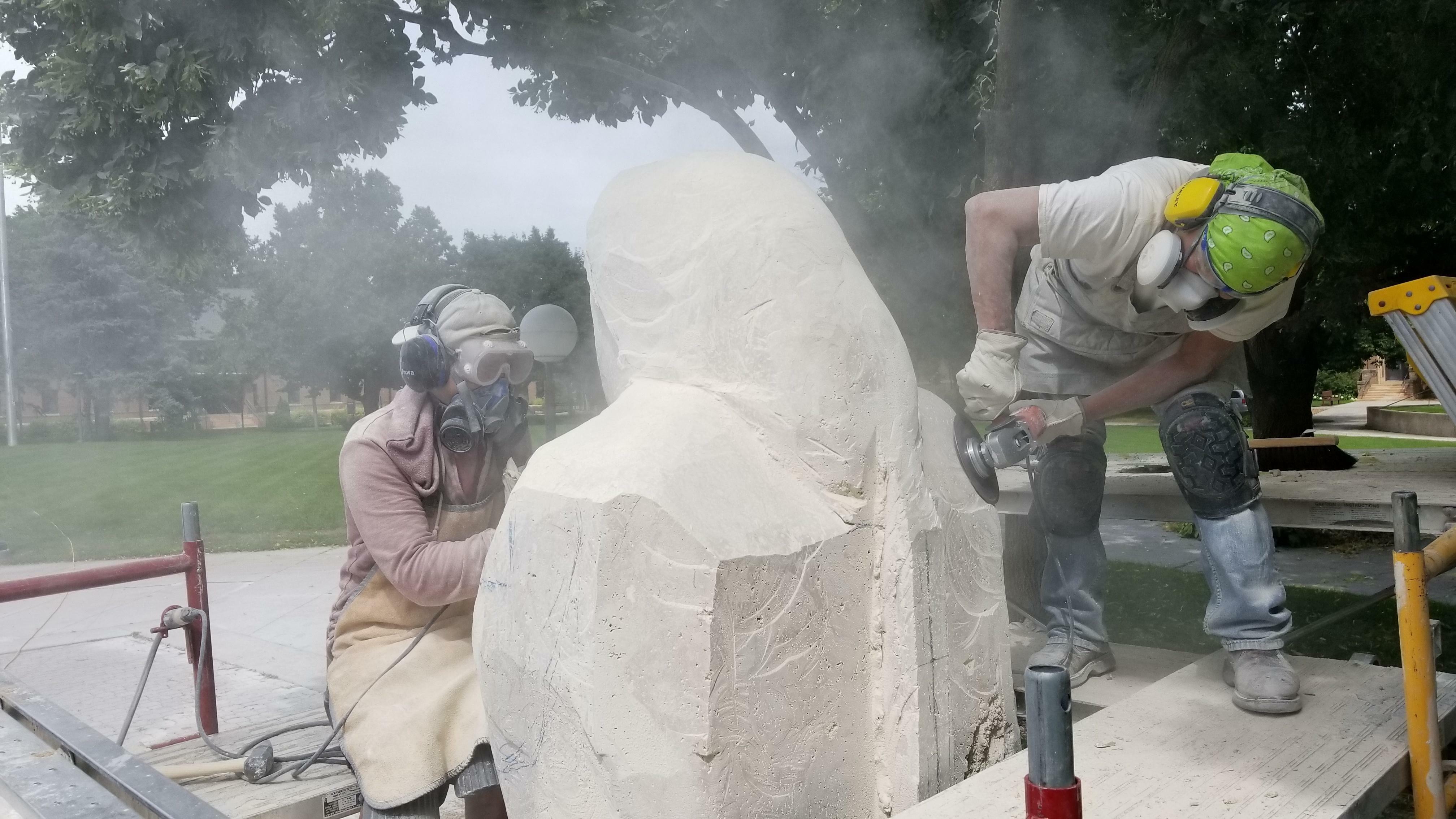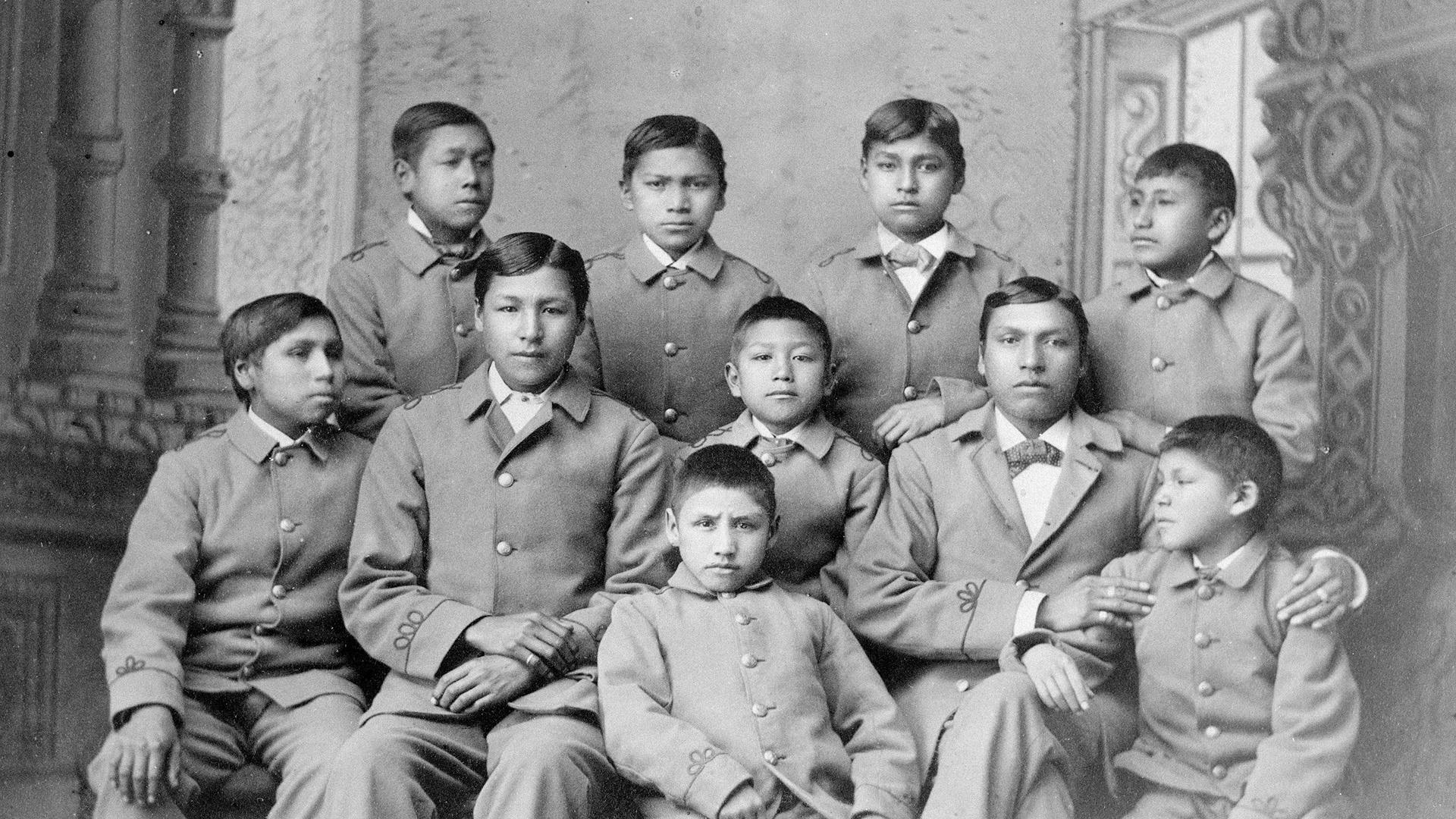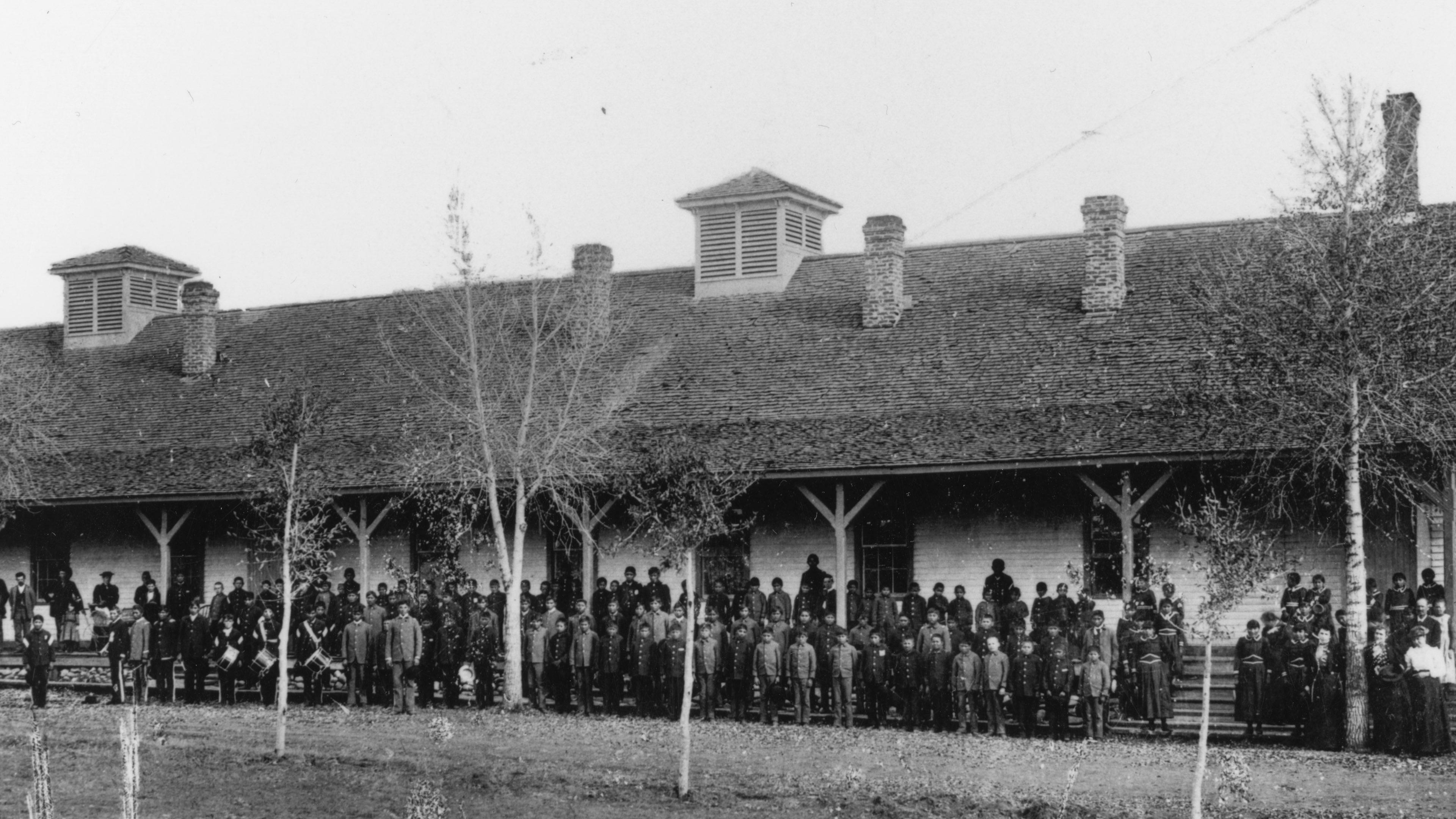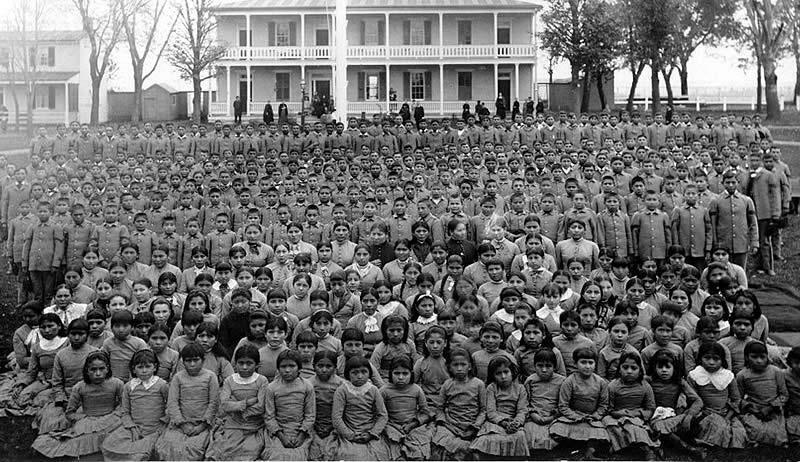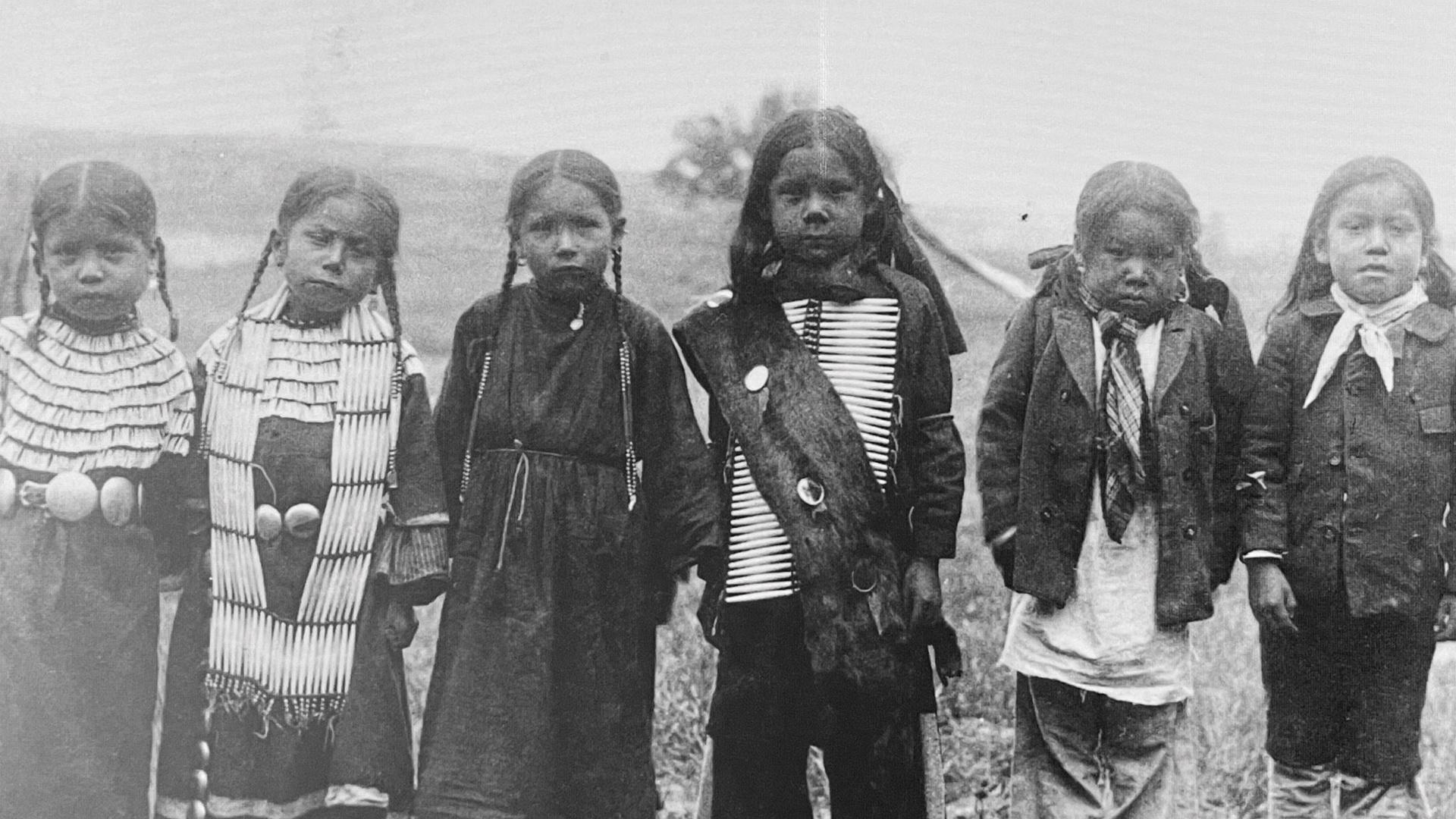Native American History: Documentaries On American Indian Boarding Schools and Forced Adoptions
The government actively worked to separate Native American families through boarding schools and forced adoptions. Check out the documentaries below to begin your learning journey on this traumatic part of U.S. history.
This documentary collection shows how the federal government's initiatives of American Indian boarding schools and forced adoption were two strands of an overall forced assimilation policy that amounted to a campaign of genocide. Today, Indigenous communities continue to share the truth of this part of their history and in doing so can start the work of reconciliation, reconnection, and reparations.
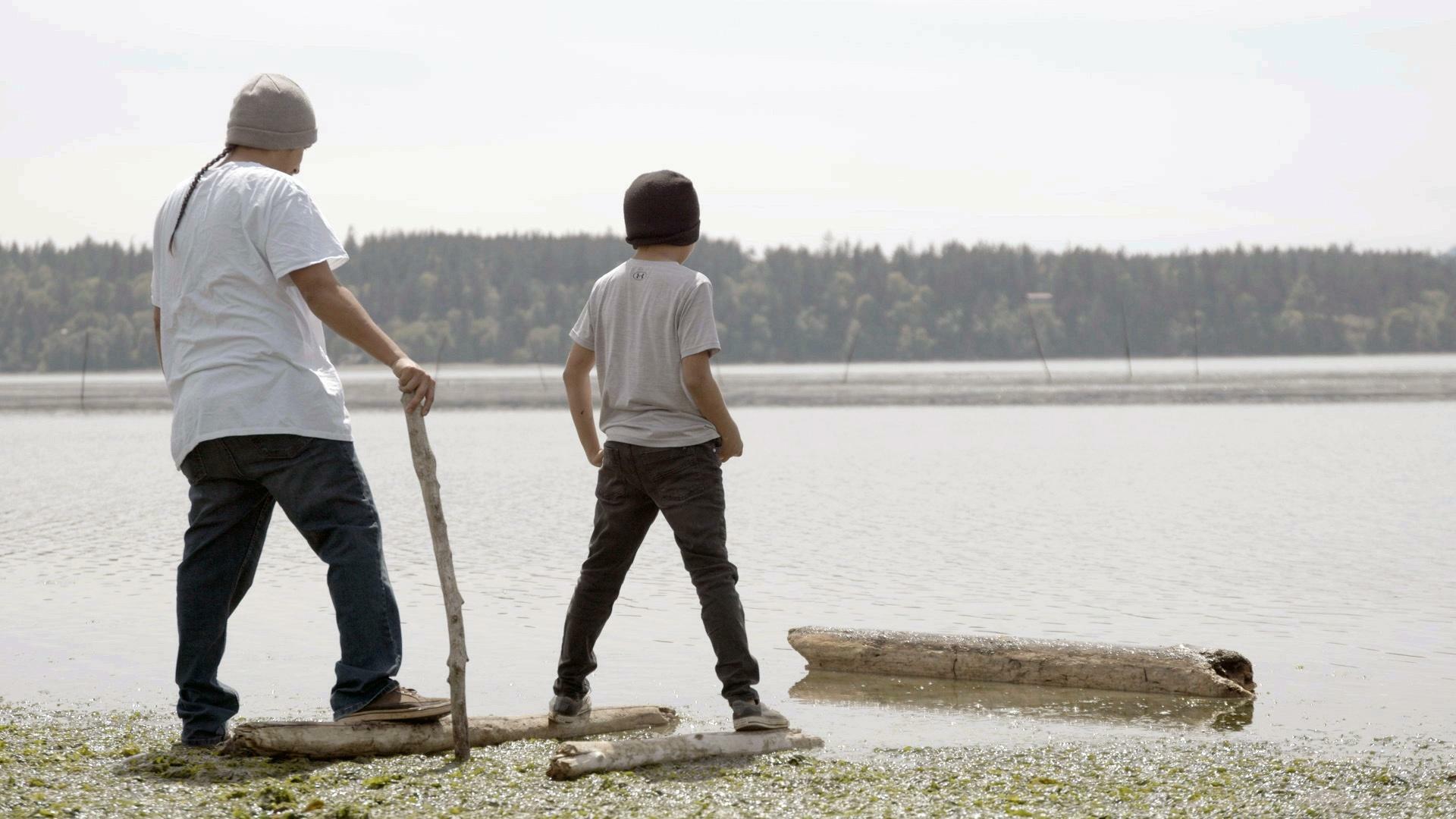
Generations Stolen
From Local, USA:
Native American communities are grappling with the fallout of government policies which separated Native children from their families and stripped them of their culture - first at boarding schools, and later in white adoptive and foster homes. On June 15, 2023, the Supreme Court rejected challenges to ICWA, a victory for Native communities working to overcome generations of trauma.
Native American adoption era history
The Bureau of Indian Affairs established the Indian Adoption Project in 1958. Like the Boarding School Initiative, the goal of forced Native adoptions was to break Indigenous families apart and strip future generations of their ancestral languages, teachings, and practices. The program officially ended in 1967.
Social workers were enlisted to go onto reservations and justify the removal of Native children from their homes with dubious and unfounded excuses. Additionally, Indigenous families were stripped of any rights to regain custody or even see their children through social workers' reports that were supported by state and federal child welfare systems. Estimates from government agencies suggest that between 25 and 35 percent of all Native children were stolen from their homes and communities in the 1960s. Of these children, an estimated 85% were often adopted into non-Native families to further the government's goal of assimilation. These estimates have been confirmed by National Indian Child Welfare Association and The New York Times.
Several documentaries from Vision Maker Media (like Dawnland, Blood Memory, and Daughter of a Lost Bird) explore the impact of the forced adoptions by sharing the experiences of adoptees who are working to reconcile and repair the trauma inflicted upon them and the communities.
Brenda Child
From History with David Rubenstein:
Scholar Brenda Child sheds light on how America’s first inhabitants, American Indians, were impacted by the arrival of colonial settlers in a discussion ranging from President Jackson’s Indian Removal Act to aggressive assimilation efforts in boarding schools and beyond.
Home From School
From Independent Lens:
"Kill the Indian in him, and save the man.” This was the guiding principle that removed thousands of Native American children and placed them in Indian boarding schools. Among the many who died at Carlisle Indian Industrial School were three Northern Arapaho boys. Now, more than a century later, tribal members journey from Wyoming to Pennsylvania to help them finally come home.

The best of PBS, straight to your inbox.
Be the first to know about what to watch, exclusive previews, and updates from PBS.
The Lasting Impact of Native Residential Schools
From Above the Noise:
Recently, the bodies of Indigenous children were discovered lying in unmarked graves at former Residential School sites in Canada. This tragic discovery begs multiple questions: Why did this happen? What exactly happened to Indigenous youth at the hundreds of similar residential schools in the United States? Why isn't this history taught in most U.S. school history classrooms?
How many states had Native American residential schools?
According to the U.S. Bureau of Indian Affairs, the federal Indian residential/boarding school system consisted of 408 federal schools across 37 states or then territories, including 21 schools in Alaska and seven schools in Hawaii. These schools were in operation from 1879 to 1969, and forced Indigenous families to enroll their children from infancy to adulthood. At these federally-run schools, the Carlisle Indian Industrial School in Carlisle, PA, being the first and largest one, children were denied any Indigenous cultural learning and were usually made to do manual labor of all kinds. Hundreds of children died at these boarding schools. The Bureau of Indian Affairs has ongoing investigations into the unmarked burial sites at many of the schools.
The U.S. government's policies of forced assimilation went along with the relocation of approximately 100,000 Native people through the Indian Removal Act of 1830. Once stripped of their land, the surviving Native people were subject to laws that forbade them to perform their traditional ceremonies, speak their languages, and, ultimately, raise their own children.
Learn more in the Native America series' companion blog "Legacy of Trauma: The Impact of American Indian Boarding Schools Across Generations."
The Smithsonian National Museum of the American Indian also has resources to explore, like historical information, images, and survivors' testimonies about the Native American boarding school system.
Local accounts of Native American boarding schools
Support your local PBS station in our mission to inspire, enrich, and educate.

